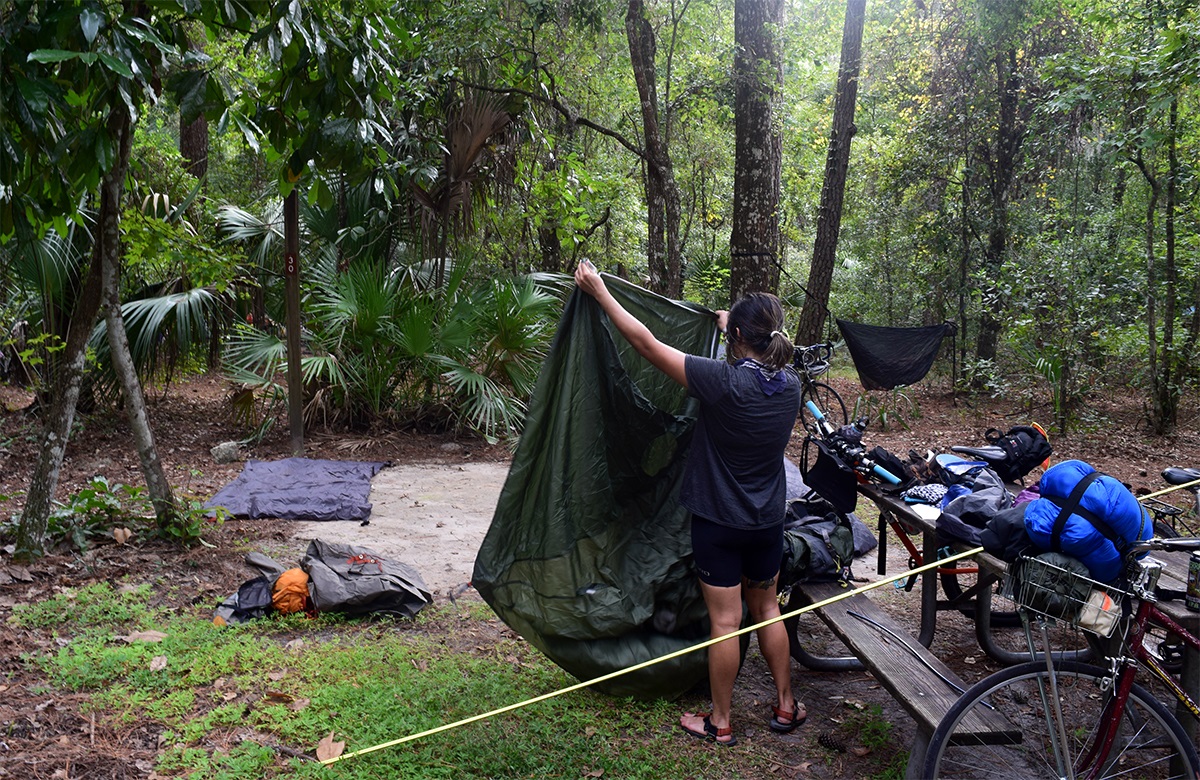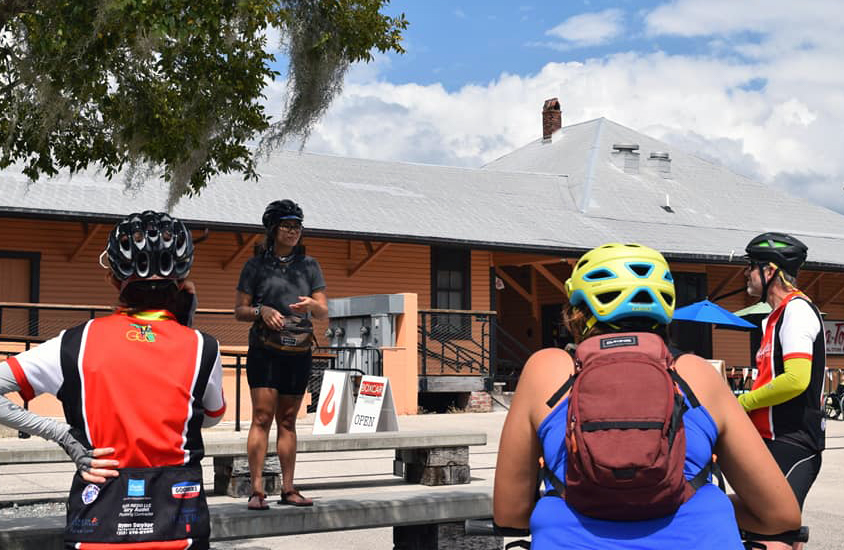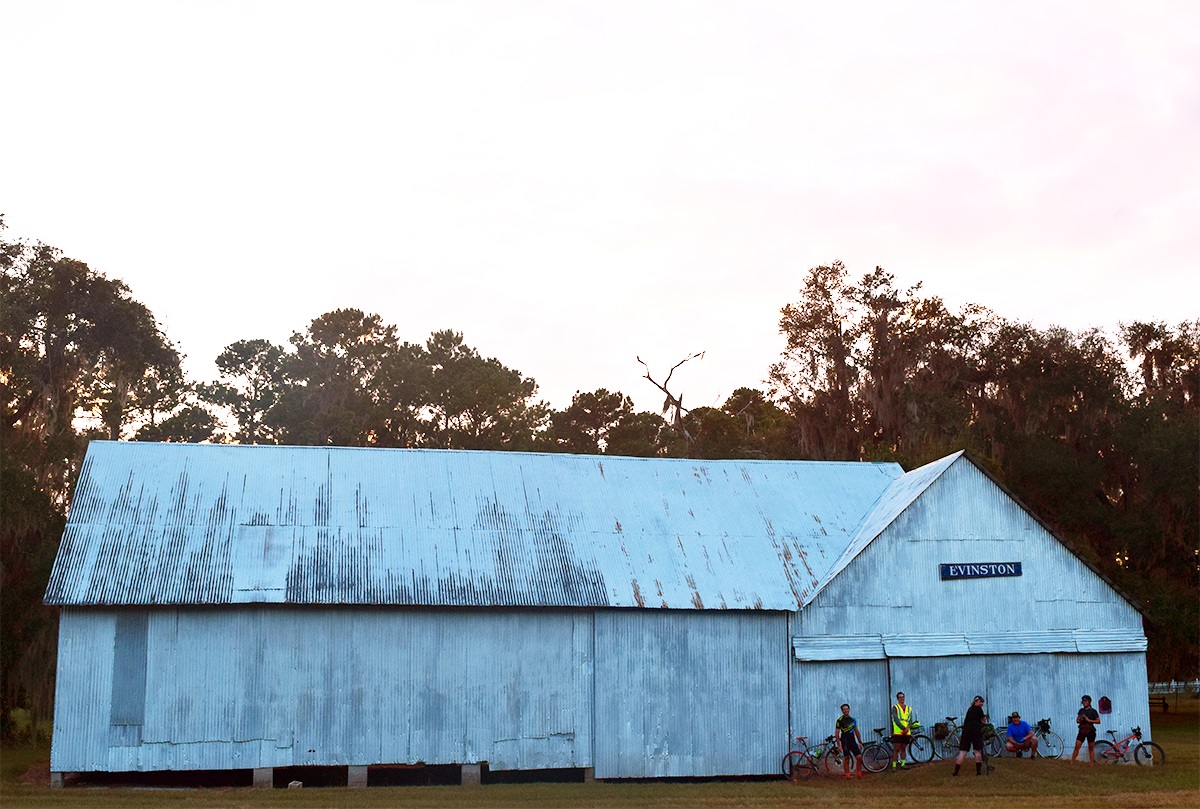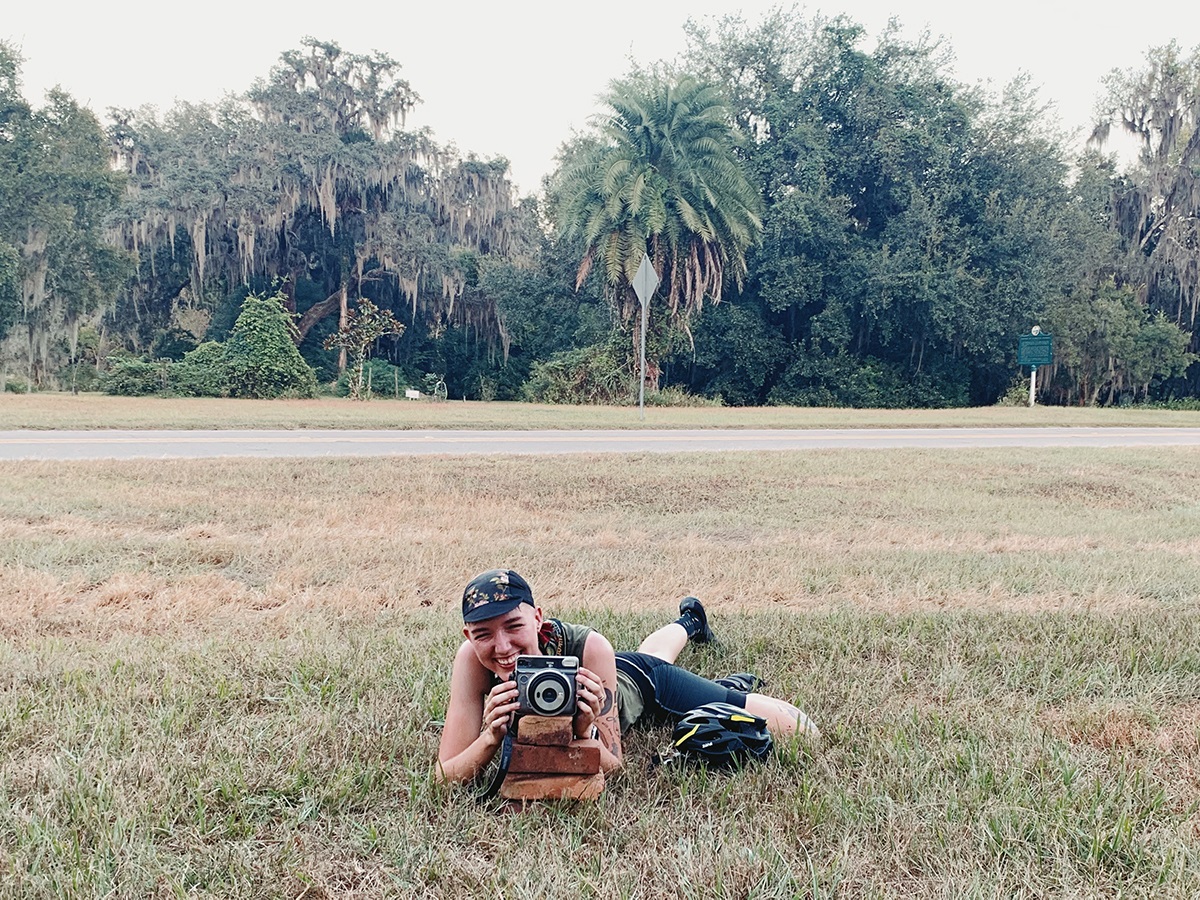How to Plan a Group Bike Overnight
When I applied to the Adventure Cycling Greg Siple Award for Young Adult Bike Travel at the end of 2018, I hadn’t pictured myself as a future tour leader. But as part of the award, I attended the Leadership Training Course in Oregon in May 2019. I left fully inspired to contribute to the cycling community, and I realized that organizing local trips could very well provide the needed nudge for potential adventure cyclists.
Bike overnights, being budget-friendly and easier to fit in a schedule, can accommodate potential adventurers across ages, income levels, and cultural identities.
I led my first bike overnight for Adventure Cycling’s Bike Your Park Day in September 2019. It was hard not to smile as I watched the cohort ahead of me, toting the night’s belongings secured by bungees onto racks and baskets, or strategically arranged in backpacks and panniers. The work I put in was worth the reward of showing this group something new and joyful.
Organizing events can be intimidating, but you don’t have to be an experienced ride leader or bicycle traveler to host a successful group overnight. Any weekend with few obligations, or an event like Bike Travel Weekend, is a great excuse to go.
Bike Travel Weekend is the first weekend in June.
Register now to lead a group ride!
COVID Considerations
Everyone’s health and safety are the highest priority. Hand sanitizer, masks, and hygiene items should be available for everyone. Double-check the current regulations and capacities for your destination to see if there are mask requirements or size limitations for dining and services.
Your group will benefit from a conversation regarding comfort and boundaries for safe interactions. You may want to discuss each others’ risk factors, whether you have been tested and when, vaccinations, and in which types of interactions you expect one another to wear masks. Although six feet has been the standard for social distancing, someone may feel more comfortable with more room. While we might navigate personal safety during a pandemic with different precautions, group members should agree to respect each person’s boundaries.
Organizing with Intention
Before tackling the details of the ride, I like to visualize an intention. For my first overnight, I knew I wanted it to be an opportunity for first-timers. I remembered that my former coworker would eagerly respond, “I would love to do that one day” when I’d recount my weekend bikepacking adventures. With that guiding my planning process, I opened the overnighter to the public as well as had a mental list of people to recruit for the ride.
Acknowledging an intention for the ride can help you know who to invite, where to advertise, the route difficulty, and how much you want to “rough it” on the adventure, if you want to at all.

Once you take on the role of an event organizer, you have an opportunity to take ownership of how cycling and bike travel engages with the people around you. I encourage you to reserve a little time and energy to include a diversity of riders for your bike overnight. The inclusion of diverse riders is especially personal to me because I am eternally grateful for the perfect combination of circumstances, people, and privilege that brought me to bike travel. The movement to see a wider variety of races, cultures, gender identities, and ages in cycling is gaining momentum, and you have a chance to participate!
Planning the Bike Overnight
At its foundation, planning a bike overnight requires that you pick a day to ride, a place to go, and a place to sleep. That’s essentially it!
Once you’ve got those basics decided on, level up your plan by giving some attention to the details! Think points of interest, a scenic route, and a shared meal. It doesn’t hurt to ask your group for recommendations beforehand to fully assess your options. Swimming spots, mid-ride bakeries, and historic highways are some of the ways that we like to make bike overnights better in Florida, but I’m sure your region has some of its own charming attractions.
Before my overnight, I led a workshop on bike travel at the local bike collective. It gave me a chance to see the group’s dynamics, collect fees for any expenses like camping or park entrances, and personally touch base with some of the riders. Because the workshop was open to anyone, I also met people who showed interest in future opportunities for bike travel.

The planning aspect isn’t limited to the event organizer. Your participants have their own responsibility to prepare themselves! Keep an open channel of communication so that you can distribute updates and that others can ask questions or for advice. This can be as simple as a text message group or Facebook thread that everyone can use before and during the trip.
Useful information to share:
- Sample packing lists, including miscellaneous items that you might overlook, such as headlamps or bug spray
- Nutritious snack ideas or camp meals
- A general itinerary of the destination and waypoints along the route
- Links to bike travel resources
- A copy of the route map through an app or link
- Expectations for behavior and safety precautions
Google Forms and its corresponding shared document applications are great for collecting information from your riders, organizing rideshares to a starting point, coordinating gear, or consolidating items for collective use. Adventure Cycling’s self-contained tours require that the group rotate cooking duties and carrying the “kitchen” of cookware, stoves, and other supplies, for example.
Some extra ways to audit your plan before the trip:
Pre-ride or drive the roads on your route to ensure they are accessible and rideable (because Google Maps has wronged me before)
Ensure that there are multiple opportunities to build a sense of belonging or community among the group. Some ideas include games, sitting around a fire, eating together, extracurricular rides.
Tip: Park staff might be a little lenient with groups of cyclists, especially if you’re considerate. I’ve stayed at free campsites then wandered over to the nearby state park to rinse off belongings and refill water. Where I live, campgrounds typically have a “2 tents per site” rule, but I’ve heard of groups on bikes getting away with an extra.
During the Bike Trip
Learning Adventure Cycling’s approach for group tours was a valuable point from my Leadership Training Course. That is, a hands-off style lets people have their own unique experience. Most of the work is done before rolling out and now you get to enjoy your bike overnight! From here, your role is to be observant and keep people motivated!
Before the group departs, confirm that all the details have been communicated, like where to go, how to get there, and how to check-in. The most effective way for everyone to navigate is to use the method that they understand and is always accessible. This could range from an uploadable file for a GPS device, to a version saved for offline use in a cell phone app, or printed maps and cue sheets.

Having a reliable cyclist (like yourself, for example) ride “sweep” ensures that no one gets stranded because of mechanical or directional issues. Depending on everyone’s fitness, the group naturally separates into multiple clusters of people. Sometimes faster riders will choose to stop at a location along the route so everyone can regroup. If you’d like them to follow this modified “no-drop” policy, communicate that before the gaps between riders begin!
As a rule of thumb, shorter rides leave more time for recreation. Longer, exhausting routes will probably leave the group cherishing downtime together at your destination. For my bike overnight, we set up camp before dark and split into groups based on what we wanted to do. I joined in on a second ride from the area before ending at a local pizza spot. Some went straight to grab food and a drink, and another group explored more of the park on a hike. If your group plans to ride back to town together the next day, notify everyone of the designated roll-out time.
No matter what you do, do NOT forget to take pictures!

If your trip isn’t going so smoothly, don’t worry — it’s just overnight! Despite being responsible for many details of the bike overnight, you can’t control everything. Each mistake or oversight from a bike overnight becomes a learning experience. Now I know that I do, in fact, need to bring my own flat repair kit and potentially multiple sizes of tubes.
Post-Event Actions
Celebrate success! Success, because … you planned a bike tour. Or people had fun. Maybe someone tried something new or got out of their comfort zone. Successes are personal but your effort and planning facilitated it.
Carry that energy forward. Join in on the bike trips that other people coordinate, tell stories about your experience, or keep riding with the people you went with. Grassroots rides are critical to building a better, more expansive community of adventure cyclists!
Something that I appreciate about bike overnights is the variety of ways they can serve people. It’s the way someone dips their toe into bike travel, or the “test ride” before a longer trip in the future. Bike overnights are the reason why it’s possible for me to continue chasing the sense of adventure and resilience I encountered on my first bike tour. Perhaps the best part of going on a local bike overnight is that I get to experience a place that I’m already well-acquainted with, only more slowly, thoughtfully, and self-sufficiently than I could have ever expected.

